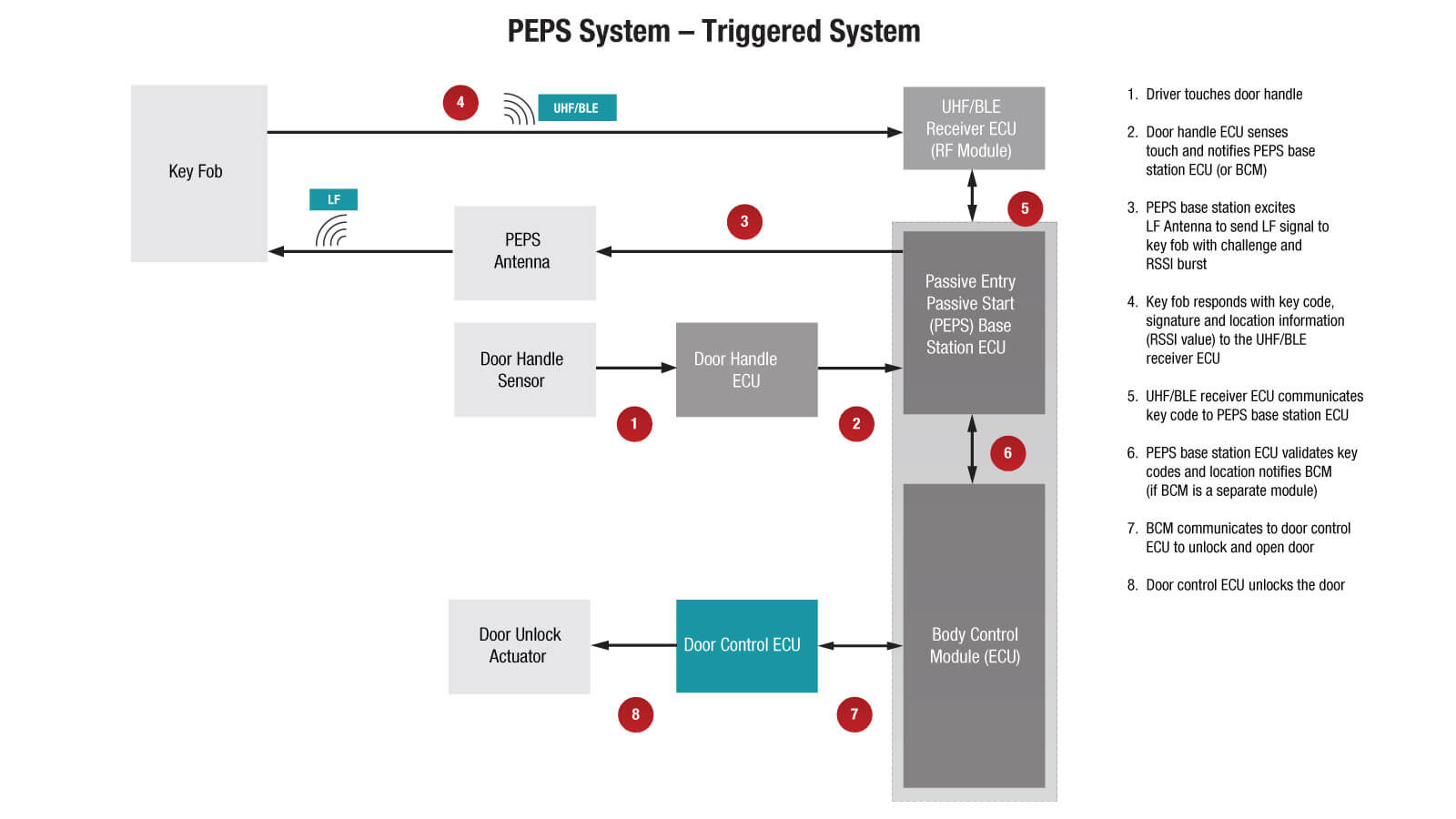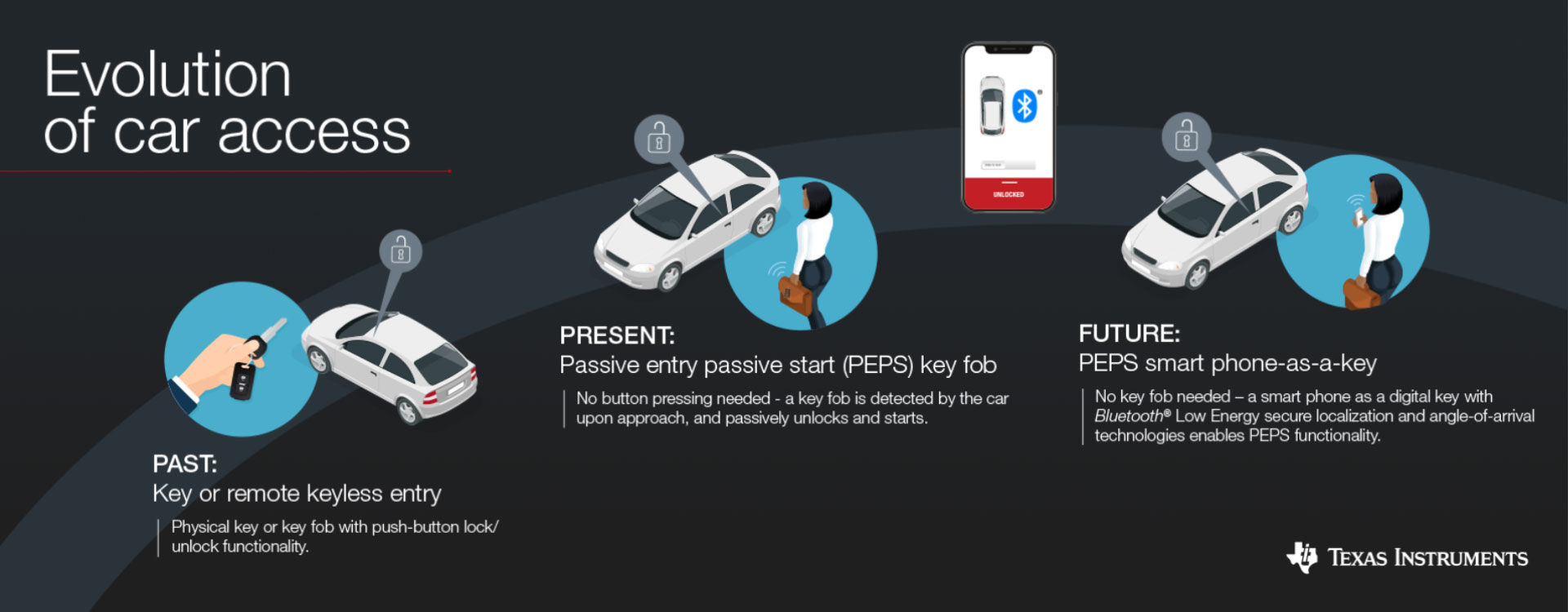How do PEPS systems work?
PEPS systems use radio-frequency (RF) communications between the car and key fob to both understand driver intentions and authenticate drivers. Low-frequency (typically 125 kHz or 134 kHz) and ultra-high-frequency (UHF) (typically Sub-1 GHz) signals communicate unique key access codes between the key fob and the vehicle. The car will only allow access functions if the exchanged codes match the expected values and the distance between the key fob and the vehicle is within a certain threshold. This measurement between the key fob and the vehicle detects both position and distance, and determines if the key is inside or outside the car. If the key is in close proximity but is still outside the car, the passive entry function should enable, but the passive start function will not be allowed.
PEPS systems can be either triggered systems or polling systems. In a triggered system, drivers initiate the process of car access by touching something on the car such as door handle, while in a polling system, the car access system continuously scans the vicinity of the car searching for the presence of a key.
Figures 1 and 2 illustrate the entry sequence in triggered and polled systems, respectively.

Figure 1: Triggered PEPS entry sequence for unlocking the door

Figure 2: Polling PEPS entry sequence for unlocking the door
Using Bluetooth® Low Energy for phone-as-a-key
Designers today are taking these advancements even further by making PEPS systems possible using a phone as a key (Figure 3).

Figure 3: Enabling PEPS in phone-as-a-key systems
The movement to introduce phone-as-a-key includes efforts to replace UHF with Bluetooth Low Energy technology. There are a number of reasons for doing so: the Bluetooth Low Energy standard is much more widely used than UHF. Communication is more standardized and more secure, and Bluetooth systems consume less power compared to UHF. Bluetooth Low Energy is already available in smartphones, and developing Bluetooth Low Energy-based car access systems will enable the use of smartphones for PEPS systems. A phone-as-a-key system goes further than drivers being able to keep their car keys in their pockets or purses – now they can even leave their keys at home. I can’t wait for the day when I can carry one less item with me.